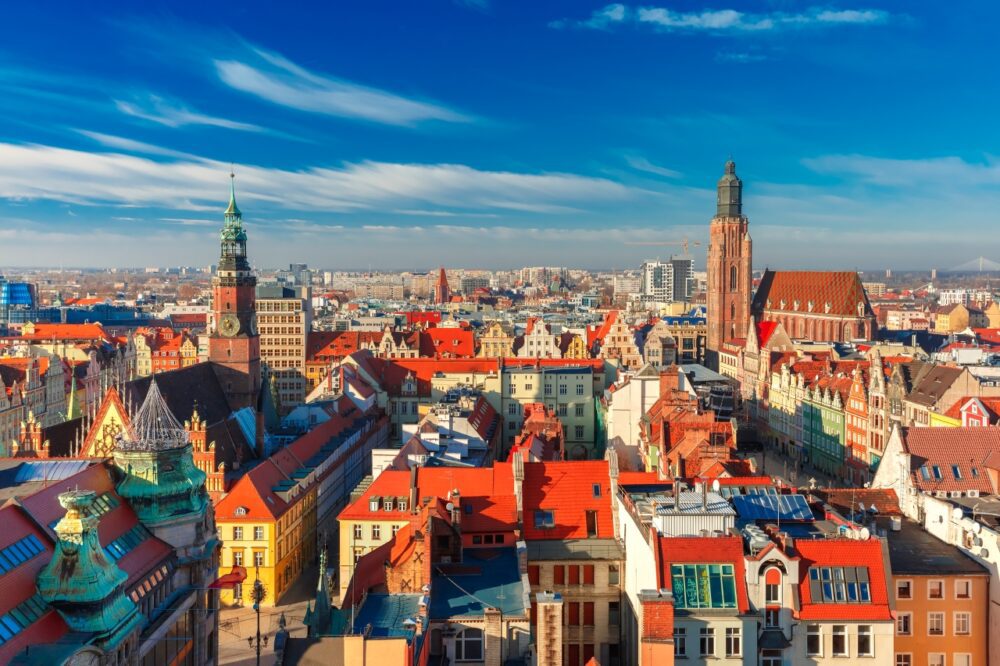
Is Wrocław worth visiting? Absolutely! The first time I visited Wrocław, I was enchanted by its colourful Market Square, charming riverfront, and playful atmosphere. Known as the “Venice of Poland” thanks to its many islands and bridges, Wrocław felt like a city full of surprises. Whether I was hunting for its famous dwarfs or taking in the views from the top of St. Elizabeth’s Church, Wrocław left me grinning from ear to ear.
Located in western Poland, Wrocław is a city that’s as beautiful as it is fascinating. Its rich history, which includes influences from Bohemia, Prussia, and Austria, is reflected in its unique architecture and multicultural vibe. The Old Town is a visual feast, with pastel-coloured buildings lining the Market Square, while Cathedral Island (Ostrów Tumski) offers a peaceful escape steeped in history. Add in lively cafés, quirky museums, and an energetic student population, and Wrocław becomes a city that’s perfect for all types of travellers.
But is Wrocław worth visiting for you? In this blog post, we’ll uncover the top 10 reasons why Wrocław should be on your travel list, from its picturesque landmarks to its unique charm. Plus, we’ll share travel tips to help you make the most of your trip to one of Poland’s most vibrant cities. Keep reading to discover why Wrocław deserves a spot on your itinerary.
Table of Contents
Pros – Reasons You Should Visit Wrocław
1. One of the Most Beautiful Market Squares in Europe
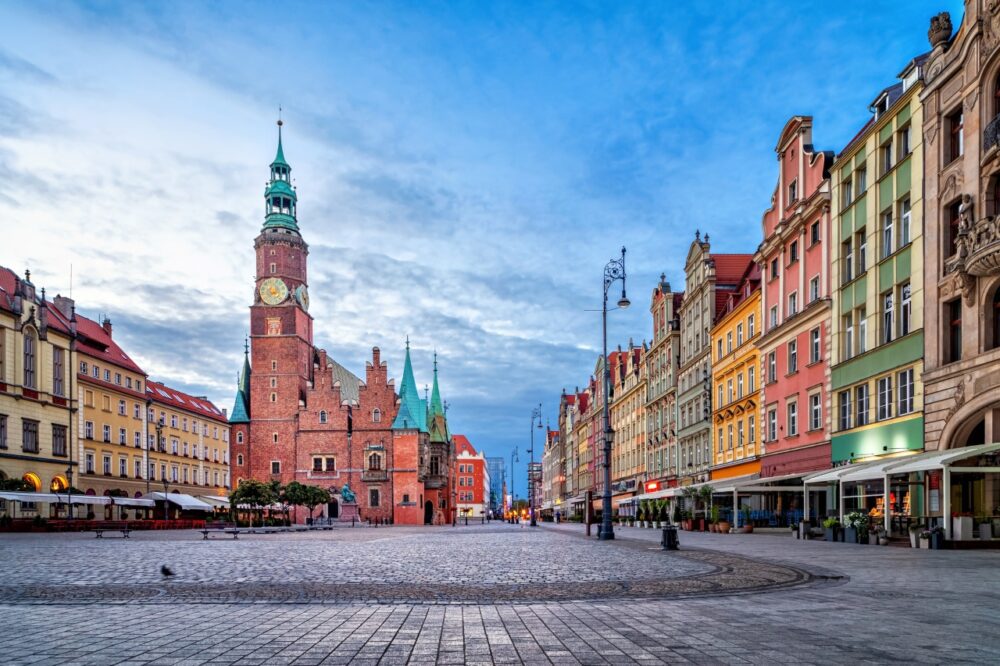
Wrocław’s Market Square, or Rynek, is one of the most stunning in Europe, with its colorful townhouses, grand Gothic architecture, and lively atmosphere. Unlike some city squares that feel purely historic, Wrocław’s Rynek is a vibrant gathering place where locals and visitors come together to eat, drink, and enjoy the scenery.
Walking through the square, I was immediately drawn to the intricate details of the Old Town Hall, which looks like something out of a fairy tale with its elaborate spires and astronomical clock. The pastel-colored buildings lining the square create a postcard-perfect backdrop, and the street performers and bustling cafés add to the energy. Whether you visit in summer or winter, the Rynek is the heart of Wrocław and one of the most picturesque squares in Poland.
2. The Unique and Charming Dwarf Statues Hidden Across the City
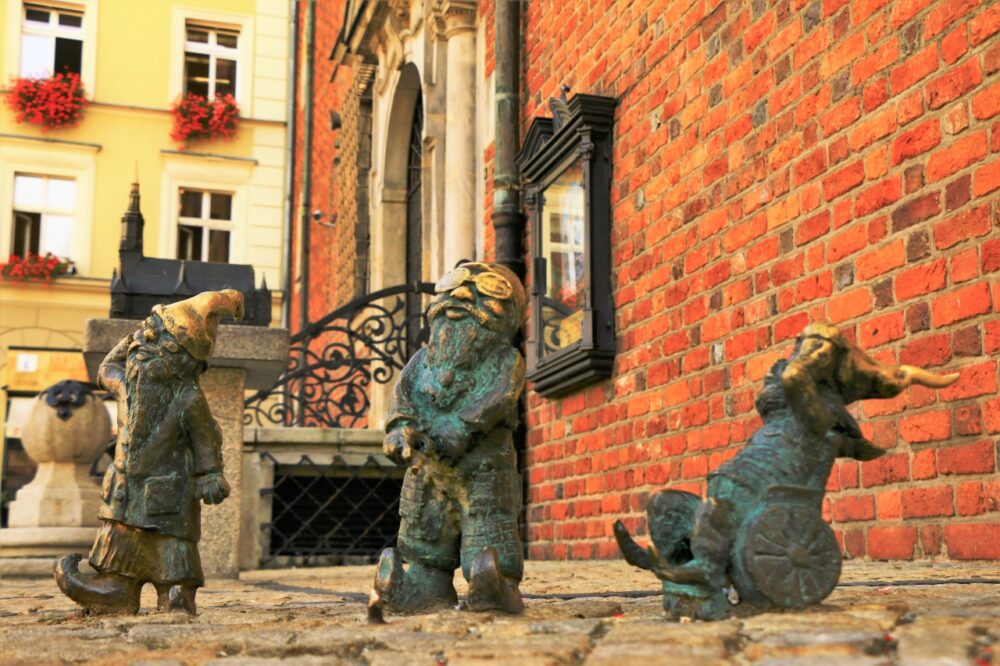
One of Wrocław’s most delightful quirks is its collection of over 600 bronze dwarf statues scattered throughout the city. These tiny figures, known as krasnale, started as a symbol of anti-communist resistance in the 1980s and have since become one of the city’s most beloved attractions.
I spent an entire afternoon wandering through Wrocław, hunting for as many dwarfs as I could find. Each one has its own personality and story—some are playing instruments, others are working in tiny shops, and a few are even climbing lamp posts. It’s a fun and interactive way to explore the city, and whether you stumble upon them by accident or use a map to track them down, they add a playful touch to Wrocław’s streets.
3. The Breathtaking Architecture of Ostrów Tumski
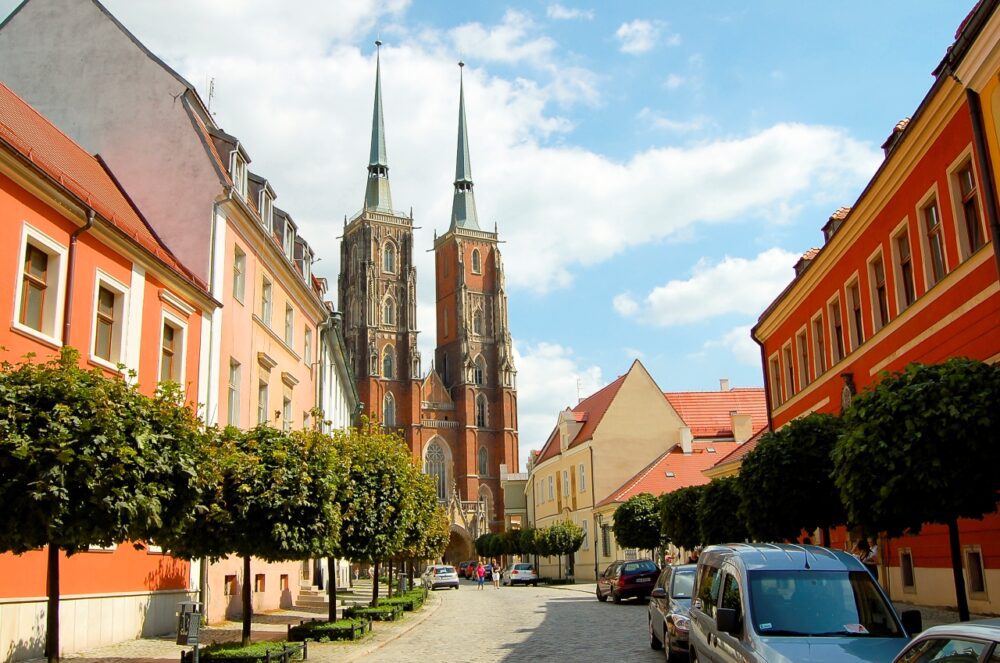
Ostrów Tumski, or Cathedral Island, is the oldest part of Wrocław and feels like stepping into a medieval world. With its cobblestone streets, historic churches, and gas lamps that are still lit by hand each evening, it’s one of the most atmospheric areas of the city.
I arrived at sunset and watched as the gas lamps were manually lit by a lamplighter dressed in traditional clothing. The warm glow of the lanterns, combined with the towering spires of Wrocław Cathedral, created an almost magical scene. Climbing to the top of the cathedral tower for a panoramic view of the city was another highlight, offering stunning views of Wrocław’s rooftops and bridges.
4. A City of Bridges and Islands
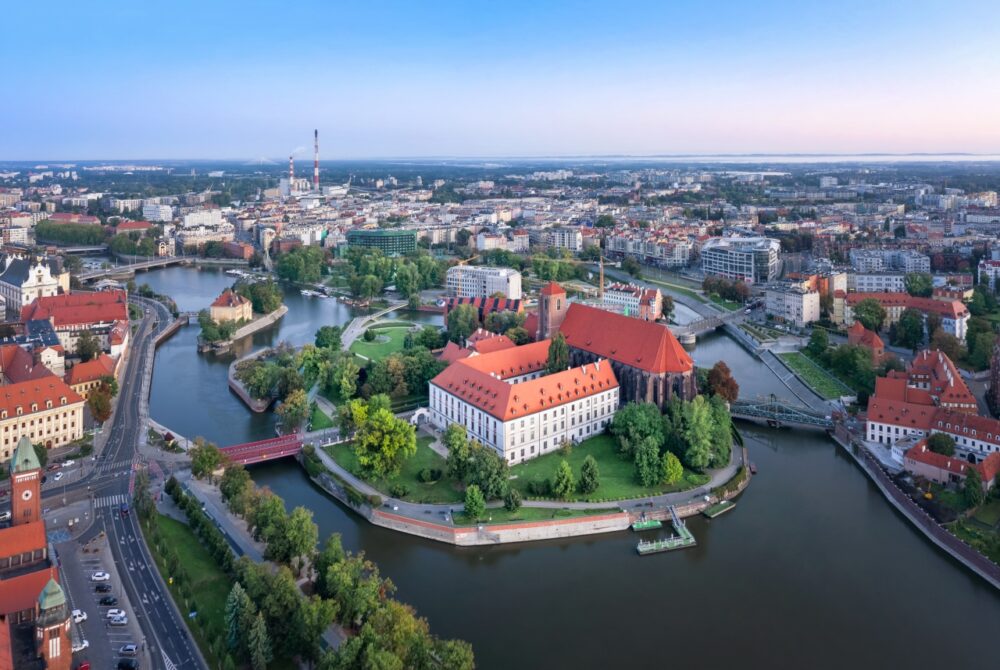
Wrocław is often called the “Venice of Poland” because of its many bridges and islands. The Oder River winds through the city, creating beautiful waterfront areas and scenic crossings that make exploring on foot or by boat a joy. With over 120 bridges, Wrocław has more than any other city in Poland.
I took a river cruise at sunset, which was the perfect way to see the city from a different perspective. Floating under historic bridges and past tree-lined islands gave Wrocław a peaceful, romantic feel. Even just walking along the waterfront, watching rowers glide across the river, made me appreciate how connected the city is to its waterways.
5. A Less Touristy Alternative to Kraków
While Kraków is Poland’s most famous tourist city, Wrocław offers just as much beauty and history with fewer crowds. It’s a place where you can wander through stunning streets without feeling overwhelmed by tour groups, and the atmosphere feels more relaxed and authentic.
I visited during peak summer, and while the Rynek was lively, it never felt overly packed. Attractions like the Centennial Hall and the University of Wrocław were easy to explore without long queues. If you’re looking for a Polish city that offers the charm of Kraków but with a more laid-back vibe, Wrocław is the perfect choice.
6. A Thriving Student and Cultural Scene

Wrocław is home to one of Poland’s largest universities, giving the city a youthful and dynamic energy. The large student population means there’s always something happening, from art exhibitions and concerts to underground bars and creative spaces.
I found the cultural scene to be incredibly diverse—one night, I attended a classical music concert in a historic church, and the next, I was at a trendy bar with live jazz. The city also hosts major events like the Wrocław Film Festival and the International Theatre Festival, making it a great place for those who love the arts.
7. Delicious Polish Cuisine with a Silesian Twist
Wrocław is in the Lower Silesia region, which has a culinary tradition that blends Polish, Czech, and German influences. The result is a fantastic food scene with hearty, comforting dishes and some unique specialties that you won’t find elsewhere in Poland.
I tried kluski śląskie, soft, round potato dumplings with a rich meat sauce, and they were absolutely delicious. Another must-try is karp po wrocławsku, a local carp dish often served during Christmas but available year-round in traditional restaurants. The city also has an amazing café culture, with plenty of cozy spots to enjoy Polish cakes and coffee.
8. The Stunning Centennial Hall and Its Surrounding Gardens
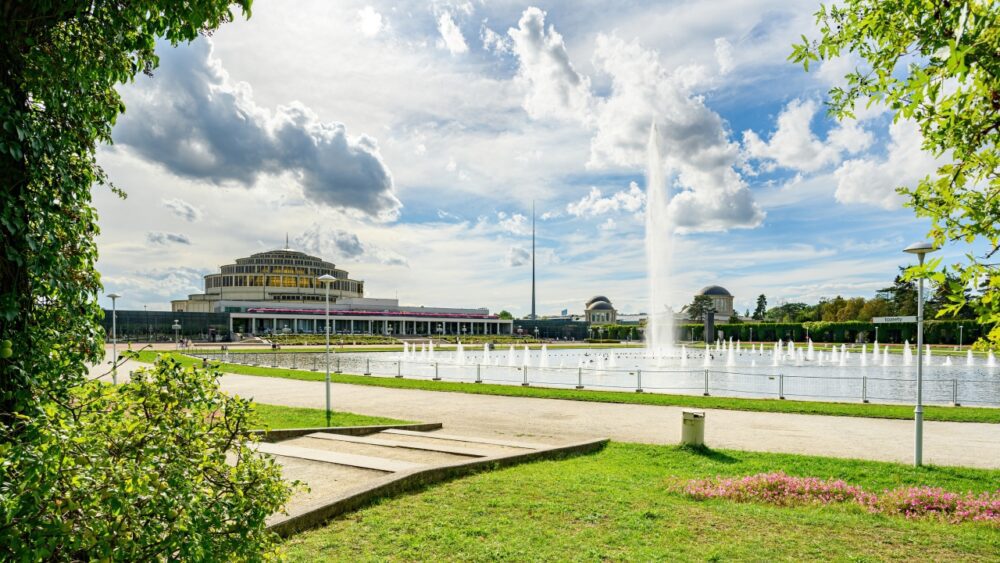
Centennial Hall, a UNESCO World Heritage Site, is one of Wrocław’s most impressive landmarks. Built in 1913, this massive dome-shaped structure was a groundbreaking achievement in architecture and is still used for concerts, sports events, and exhibitions today.
I visited the hall and was amazed at its sheer scale and innovative design. Just outside, the Japanese Garden provided a peaceful retreat, with beautifully arranged plants, ponds, and wooden bridges. The nearby multimedia fountain show, where water jets dance to music and lights, was another unexpected highlight that added to the experience.
9. A Surprisingly Affordable European Destination
For such a beautiful and historic city, Wrocław remains surprisingly budget-friendly. Accommodation, dining, and attractions are all reasonably priced, making it an excellent destination for travelers looking for a European experience without the high costs of cities like Paris or London.
I stayed in a stylish hotel right in the Old Town for a fraction of what I would have paid in Western Europe. A full meal at a nice restaurant, including soup, a main dish, and a drink, cost far less than I expected. If you want a high-quality travel experience without spending a fortune, Wrocław is a fantastic choice.
10. A Friendly and Welcoming Atmosphere
One of the things that stood out most to me about Wrocław was how friendly and welcoming the people were. Whether I was asking for directions, ordering food, or chatting with locals in a café, everyone was warm, helpful, and happy to share recommendations about their city.
Unlike larger tourist destinations where service can sometimes feel rushed, Wrocław had a genuine, inviting atmosphere. I felt like I had space to explore at my own pace without feeling like just another visitor in a crowd. The combination of beautiful surroundings, rich history, and friendly people made Wrocław one of the most enjoyable cities I’ve visited in Poland.
Cons – Things to Consider When Visiting Wrocław
1. The Weather Can Be Unpredictable and Rainy
Wrocław has a temperate climate, which means that while summers can be warm and pleasant, the weather can also change unexpectedly. Rain showers are common throughout the year, and winters can be damp and chilly, with occasional snow and strong winds that make it feel even colder.
I visited in late spring, expecting mild temperatures, but ended up caught in a sudden downpour that lasted most of the afternoon. The rain wasn’t heavy, but it was persistent enough to make walking around the city less enjoyable. Even in summer, it’s a good idea to carry an umbrella or rain jacket, as the weather can shift quickly. If you’re visiting in winter, be prepared for cold temperatures and shorter daylight hours, which can make sightseeing less appealing.
2. The City Can Feel Overcrowded During Peak Tourist Season
While Wrocław is generally less crowded than Kraków or Warsaw, the Old Town and Market Square can become packed with tourists, especially during summer and around the Christmas market in December. The city’s growing popularity means that certain attractions, restaurants, and cafés can feel a bit overcrowded during peak times.
I was in Wrocław during a summer weekend, and the main square was so full of people that it was difficult to find a quiet spot to sit and enjoy the view. Finding a table at some of the more popular restaurants required advance reservations, and the queue to climb the cathedral tower was longer than expected. If you prefer a more relaxed experience, visiting in the shoulder seasons—spring or early autumn—can help you avoid the biggest crowds.
3. Public Transport is Good but Can Be Confusing for First-Time Visitors
Wrocław has a decent public transport system with trams and buses, but for first-time visitors, navigating the network can be a bit confusing. Some tram lines don’t run as frequently as you might expect, and not all ticket machines accept card payments, which can be inconvenient if you don’t have cash.
On my first day, I struggled to figure out which tram line I needed, as the signage wasn’t always clear, and some schedules weren’t updated in real-time. While locals were helpful when I asked for directions, I found that some tram stops lacked clear information in English. If you plan to use public transport, it’s best to download a local transit app or check routes in advance to avoid unnecessary delays.
4. Some Parts of the City Feel a Bit Neglected or Less Polished
While Wrocław’s Old Town is beautifully maintained, some areas outside the historic center feel a little worn down, with older Soviet-era buildings, graffiti, and less investment in upkeep. This contrast between the charming Old Town and some of the more industrial or residential districts is noticeable, especially if you venture beyond the tourist hotspots.
I walked through parts of Nadodrze, a district known for its artistic scene, and while it had some interesting street art and cafés, there were also areas that felt slightly neglected. While this didn’t make me feel unsafe, the difference in maintenance between the Old Town and the outer neighborhoods was quite apparent. If you’re expecting the entire city to have the same postcard-perfect look as Rynek, you might be surprised by the contrast.
5. English is Spoken, but Not as Widely as in Other Major Polish Cities
While English is commonly spoken in tourist areas, restaurants, and hotels, it’s not as widely used in Wrocław as in larger cities like Warsaw or Kraków. In some local eateries, markets, or public transport settings, you may encounter staff who speak little or no English, which can make communication a bit challenging.
I had a few moments where ordering food required some pointing and basic Polish phrases, as the menu had no English translation and the staff didn’t speak much English. While this wasn’t a major issue, it’s helpful to learn a few key Polish words or have a translation app ready, especially if you plan to visit more local spots. That said, most people were friendly and patient, and I never found it to be a huge barrier.
When to Visit Wrocław
The best times to visit Wrocław, often called the “Venice of Poland” for its beautiful canals and islands, are spring (April to June) and autumn (September to October). These months offer mild weather, making it ideal for exploring the Old Town and the scenic Ostrów Tumski. Summer (July and August) is lively, with outdoor festivals like the Wratislavia Cantans Festival, though it can be busier. Winters in Wrocław are quieter but magical, especially in December, when the Christmas market transforms the Main Square into a festive wonderland.
How to Get to Wrocław
Wrocław Copernicus Airport (WRO), located 10 kilometres from the city centre, is the primary gateway, with flights from major European cities via airlines like Ryanair, Wizz Air, and Lufthansa. From the airport, buses like the 106 connect to the city centre in about 30 minutes, while taxis and ride-hailing apps like Bolt are also available. Wrocław is well-connected by train to other Polish cities, with direct services from Warsaw, Kraków, and Gdańsk, making it accessible for travellers arriving from within the country.
Where to Stay in Wrocław
Wrocław offers a range of accommodation options to suit various budgets and preferences:
- Luxury: Old Town – Stay near landmarks like the Market Square and Town Hall. Options include Monopol Hotel, a five-star gem with historical charm, and The Granary – La Suite Hotel, combining luxury with boutique style.
- Mid-range: Śródmieście or Old Town Periphery – Consider Qubus Hotel Wrocław, located close to the main attractions, or Hotel Mercure Wrocław Centrum, offering modern amenities at a reasonable price.
- Budget: Nadodrze District or Hostels in the Old Town – Affordable stays like Hostel Wratislavia or Corner Hostel are perfect for budget-conscious travellers looking to stay near the action.
Getting Around Wrocław
Wrocław’s compact Old Town is best explored on foot, with its colourful Market Square, Gothic Town Hall, and numerous dwarf statues easily accessible. For longer distances, the MPK Wrocław public transport network, which includes trams and buses, is reliable and affordable, with single tickets or day passes available. Cycling is a great option in warmer months, with bike rentals and the Wrocław City Bike system offering convenient alternatives. Taxis and ride-hailing apps like Bolt are widely available but often unnecessary due to the city’s efficient public transport system.
How Long to Spend in Wrocław
Two to three days is ideal for exploring Wrocław’s highlights, including the Market Square, Ostrów Tumski, and the quirky dwarf statues scattered around the city. This allows time to visit the Panorama of Racławice, the Wrocław Zoo and Africarium, and to enjoy the city’s lively cafe and restaurant scene. With an extra day, consider a trip to the picturesque Ksiaz Castle, about an hour away. Wrocław’s blend of history, charm, and a vibrant atmosphere make it one of Poland’s most captivating cities.
Conclusion
So, is Wrocław worth visiting? Absolutely! With its stunning Market Square, fascinating history, and whimsical charm, Wrocław is a city that’s hard to resist. Highlights like Cathedral Island, the city’s network of bridges and canals, and its playful gnome statues make it a destination packed with character. While it may not have the international fame of Kraków, its unique blend of beauty and personality makes it equally captivating. If you’re ready to explore one of Poland’s most delightful cities, start planning your trip to Wrocław today—you won’t regret it!
